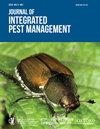IPM在美国的采用和影响
IF 2.7
3区 农林科学
Q1 ENTOMOLOGY
引用次数: 4
摘要
害虫综合治理(IPM)的推广不仅取决于创新研究的未来,还取决于种植者采用新IPM技术的意愿。创新的采用和传播可能遇到许多不同的挑战。通过更好地理解IPM采用的驱动因素和障碍,未来的研究、推广和教育可以更好地瞄准行为改变。本研究旨在通过在线质量调查,从国家IPM协调员的角度,更好地了解IPM采用的驱动因素和障碍,以及IPM的影响。这些专业人士对IPM的采用有着全州范围的看法。在56份电子邮件调查邀请中,有37份完成了调查,回复率为66%。总体而言,参与者将“实践成本高”列为采用IPM的最关键障碍。“实施困难”和“缺乏意识”也被列为采用的关键障碍。当被问及增加IPM采用的方法时,参与者将“改进成本效益分析”列为最重要的。总的来说,这些发现表明,在促进新的和现有的IPM创新的同时,提供改进的IPM经济成本效益分析的重要性。此外,尽管本研究的结果表明,区域IPM中心的影响是促进区域IPM的协调、沟通、协作和合作。这些发现还表明,需要更全面的推广和教育计划,通过沟通改进的IPM成本效益分析,具体解决“实践成本高”、“实施困难”和“缺乏意识”的问题。本文章由计算机程序翻译,如有差异,请以英文原文为准。
IPM Adoption and Impacts in the United States
Abstract Increased Integrated Pest Management (IPM) adoption hinges not only on the future of innovative research, but also on the willingness of growers to adopt new IPM technologies. Adoption and diffusion of innovations can encounter many different challenges. By better understanding the drivers of and barriers to IPM adoption, future research, extension, and education can better target behavior change. This study sought to better understand the IPM adoption drivers and barriers, along with the impacts of IPM, from the perspective of state IPM coordinators via an online Qualtrics survey. These professionals have a statewide perspective on IPM adoption. There were 37 completed surveys out of 56 email survey invitations, a 66% response rate. Overall, the participants ranked ‘high cost of practice’ as the most critical barrier to IPM adoption. ‘Difficulty of implementation’ and ‘lack of awareness’ were also highly ranked as critical barriers to adoption. When asked about ways to increase IPM adoption, participants ranked ‘improved cost-benefit analysis’ as the most critically important. Overall, these findings demonstrate the importance of providing improved IPM economic cost-benefit analyses to accompany the promotion of new and existing IPM innovations. Furthermore, even though the results of this study suggest that the impact of the Regional IPM Centers has been increasing regional IPM coordination, communication, collaboration, and cooperation. These findings also suggest a need for more comprehensive extension and education programs to specifically address the perceived ‘high cost of practice,’ ‘difficulty of implementation’, and ‘lack of awareness’ by communicating improved IPM cost-benefit analyses.
求助全文
通过发布文献求助,成功后即可免费获取论文全文。
去求助
来源期刊

Journal of Integrated Pest Management
Agricultural and Biological Sciences-Insect Science
CiteScore
5.80
自引率
3.60%
发文量
24
审稿时长
25 weeks
期刊介绍:
Journal of Integrated Pest Management is an open access, peer-reviewed, extension journal covering the field of integrated pest management. The Editors-in-Chief are Dr. Marlin E. Rice (formerly with Iowa State University) and Dr. Kevin L. Steffey (formerly with the University of Illinois). The journal is multi-disciplinary in scope, publishing articles in all pest management disciplines, including entomology, nematology, plant pathology, weed science, and other subject areas.
 求助内容:
求助内容: 应助结果提醒方式:
应助结果提醒方式:


